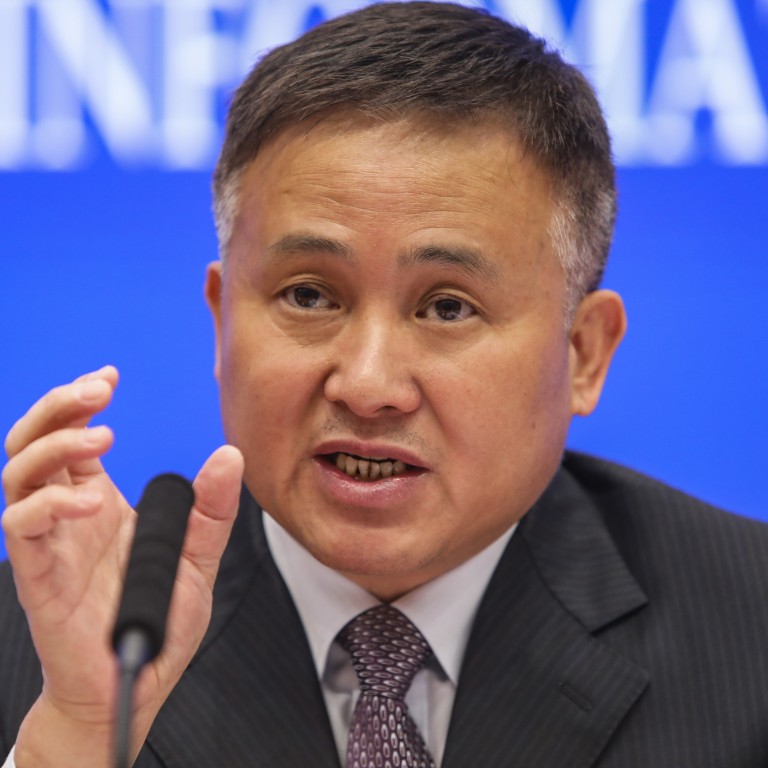
China’s fintech industry needs regulation to avoid risk build-up, central bank says
- While financial technology brings efficiencies, its risks must be closely regulated, warns People’s Bank of China deputy governor Pan Gongsheng
- Government’s deleveraging campaign a costly lesson of what can go wrong if risks not kept in check
China’s central bank has again warned that the country must avoid building up risks in the technology-driven development of its domestic financial sector, given the headwinds of a slowing economy and the continued trade war with the United States.
Pan Gongsheng, deputy governor of the People’s Bank of China (PBOC), said on Tuesday that financial technology (fintech) should be regulated in accordance with the law and in line with policy initiatives intended to prevent financial risks, according to local media.
The interests of investors in low-risk products should be protected, as should citizens’ wallets, Pan is reported to have told the China Internet Finance Forum.
“It is necessary to prevent [financial] technology from being used as a disguise and result in unproductiveness in finance,” Pan said. “Financial activities that interact with the public, even in the name of technology, should be strictly regulated.”
It is necessary to prevent [financial] technology from being used as a disguise and result in unproductiveness in finance. Financial activities that interact with the public, even in the name of technology, should be strictly regulated
Pan stressed that new technologies would help improve the quality and efficiency of the financial sector, so that support would be provided to firms to accept e-commerce finance platforms and supply chains, enriching the financial product system. Technology-driven financial activities should serve people and the real economy, he said.
“[We should use] technologies to encourage the lowering of financial costs, to help solve the financing difficulties of small and micro enterprises, to win the battle of poverty alleviation, and to support the implementation of rural revitalisation strategies,” said Pan.
By using technology, regulators’ ability to supervise the financial sector should be more effective, including across markets, across industries and across regions.
“We have paid a huge price and learned a profound lesson from the expansion of and exposure to online financial risks that resulted in the current clean-up,” Pan added. “It is worth serious reflection and review.”
We have paid a huge price and learned a profound lesson from the expansion of and exposure to online financial risks that resulted in the current clean-up. It is worth serious reflection and review
In response to rapidly rising debt in the corporate sector and ballooning local government borrowing, the Chinese government started a deleveraging campaign in late 2016 by strengthening regulations in the shadow banking sector, made up of unregulated financial activities.
The government clampdown hit small- and medium-sized enterprises (SMEs) especially hard, as they relied heavily on shadow banks to meet their financing needs. Even though the PBOC took incremental easing measures in its monetary policy to support growth this year, the liquidity environment has still not improved for many of these SMEs.
Due to the government crackdown, Chinese total debt amounted to 268 trillion yuan (US$38.3 trillion) at the end of the second quarter of this year, equivalent to 287 per cent of Chinese gross domestic product (GDP), a similar level to that in the third quarter of 2017, according to estimates by Pictet Wealth Management.
The debt-to-GDP ratio of the non-financial corporate sector declined to 143 per cent of GDP in the second quarter from a peak of 148 per cent in the second quarter of 2016.
The question for many Chinese companies now is whether the government has finished its deleveraging campaign and will loosen restrictions on the shadow banking sector to ease financing conditions to help support growth.
Last month China created a specially designated task force aimed at eliminating risks associated with peer-to-peer online lending platforms. While the government has vowed a “thorough revamping” of the controversial lending platforms, as part of its continuing battle against financial risk, it has been warned to avoid making the same mistakes again.

